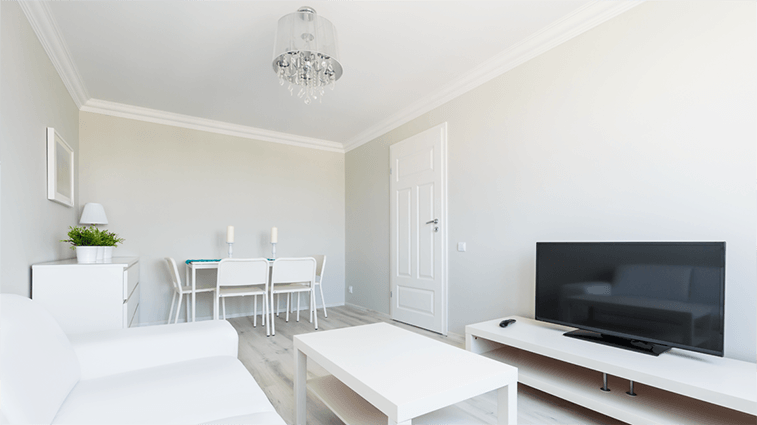
Are NYC’s New Micro-Apartments Much Smaller?
New York City’s adAPT program, which sidesteps existing Building and Zoning Codes to build prefabricated micro-apartment buildings, launched amid much controversy. Proponents claim the micro-apartments are appropriate for today’s renter—young, single and on the go. Detractors are apprehensive about the compromise of space in a crowded city saturated with pint-sized living spaces.
Described as “an innovative apartment model, that includes a kitchen and bathroom that is smaller than what is allowed under current regulations,” the first micro-apartment complex located at 335 East 27th Street contains 55 apartments ranging from 260 to 360 square feet. Taking a closer look at New York City’s Building Code, Plumbing Code, Zoning Code and ANSI’s accessibility statutes which all set minimum size standards for apartment size in New York, these micro-apartments may not be much smaller than current allowances.
Several articles on the adAPT program erroneously state the minimum size required for New York City apartments as 400 square feet. However, only apartments in the Quality Housing Program are required to be 400 square feet. The Quality Housing Program is only mandatory for contextual housing in districts R6 through R10, a small percentage of New York City’s apartment stock.
For apartment dwellings that are not Quality Housing, there is no overall minimum floor area. There is only minimum floor area for the three rooms, or certain components within the rooms. The minimum sizes for the living room, kitchenette and bathroom require a closer look at several statutes within the Building, Zoning, Housing and Maintenance and Plumbing Codes as well the ANSI accessibility laws.
New York City apartments must contain a living room, kitchen or kitchenette and bathroom. Administrative Code Section 27-2004 states “an apartment shall mean one or more living rooms arranged to be occupied as a unit separate from all other rooms within a dwelling, with lawful sanitary facilities and a lawful kitchen or kitchenette for the exclusive use of the family residing in such unit.”
Living Room
Of the three required rooms in a New York City apartment, the minimum size of a living room is the most clear-cut. Administrative Code Section 27-2004 states that a living room “shall mean any room within a dwelling unit except a dining space, kitchenette, bathroom or water closet compartment, foyer or private hall, corridor passageway.” Housing and Maintenance Code Section 27-2074 states that if a building is “erected, constructed or altered pursuant to plans filed on or after December 9th, 1955, one living room shall have a minimum floor area of 150 square feet.” Second rooms are not mandatory for apartments and have a smaller size requirement of 80 square feet.
Kitchen
Unlike living rooms, the minimum size for an apartment kitchen in New York is not ironclad. Administrative Code Section 27-2004 defines a kitchen as “a living room used for cooking with 80 square feet or more of floor area.” A kitchenette is a “space used for cooking with less than 80 square feet of floor area.” However there is no required minimum floor area for an entire kitchenette. There are only minimum area requirements for certain elements of a kitchenette.
ANSI requires kitchenettes to have minimum clear floor space and countertop workspace. The Plumbing Code also mandates that a kitchen contain one sink, but does not mandate its size. These being the only size requirements, architects designing kitchen floorplans have quite a bit of flexibility.
The most critical size requirement for a New York City apartment kitchen is the ANSI regulated minimum floor clearance. ANSI Section 1003.12.1.1 mandates that “clearance between all opposing base cabinets, counter tops, appliances, or walls within kitchen work areas shall be 40 inches minimum.”
Kitchens have three basic layouts: one-sided, two-sided and U-shaped. The one-sided layout is the smallest because it has only one counter and allows the accessible clear floor space of 40 inches as opposed to the 60 inches required in the U-shaped layout.
After the clear floor area, the length and width of the kitchen counter in the one-sided layout determines the overall floor area of the kitchen. New York City Plumbing Code Table 403.1 requires all R-2 occupancies to include one kitchen sink. ANSI Section 1003.12.3 requires kitchens to have a 30-inch workspace. These are the only two requirements for the kitchen counter.
However, kitchenette counters, which are certain to contain a refrigerator and oven along with a sink, will have a depth of no less than 24 inches. By introducing small sized appliances to the kitchen counter, we can arrive at a small sized kitchen counter length. Small counter appliances may include a 24-inch refrigerator, a 13-inch sink and a 20-inch stove. Added to the 30-inch workspace length and a small kitchen counter length in a one-sided kitchen layout would be about 87 inches.
Taking the counter depth of 24 inches, adding the accessible floor space of 40 inches and we arrive at a kitchen width dimension of 64 inches. With a length of 87 inches and width of 64 inches, a small one-sided kitchen would be no less than 38 square feet.
Bathroom
Like the kitchen, there is no statute mandating the minimum floor area for a New York City apartment bathroom. There are components a bathroom must include, and some of those do have minimum size requirements.
New York’s Plumbing Code Table 403.1 states that R-2 occupancies must have one water closet, one lavatory and one bathtub or shower. Sinks and water closets do not have minimum size requirements, but these fixtures generally come in standard sizes. If a shower is used in lieu of a bathtub, Plumbing Code Section PC417.4 mandates the shower to have 900 square inches of inter cross-sectional area.
The main size requirement for bathrooms is the ANSI required clear floor space. P 102.8.2.1 of Appendix P of the New York City Building Code (which is derived from ANSI section 1004) requires a water closet with a parallel approach to have a 56-inch clear floor space from the rear wall and 48-inch perpendicular to the side wall. Bathrooms with a forward approach have slightly larger clear floor space requirements.
As mentioned, water closets and lavatories do not have minimum size requirements in and of themselves. There are only required distances of these plumbing fixtures from each other. Accessibility laws mandate a water closet centerline width of 16-18 inches to the wall and a centerline width of 15 inches to the bath or sink.
Taking into account the required clear floor space for a parallel approach bathroom layout, along with a smaller sized water closet, lavatory and shower with the 900 square inch cross sectional area requirement, adding the required separation distances for each plumbing fixture, it would be difficult to build a lawful New York City apartment bathroom under 30 square feet.
By taking small sized 150 square foot living room, a 30 square foot bathroom, and a 38 square foot kitchen, the three rooms total 218 square feet. Adding some additional floor area for closets, an entrance and some square footage to make all three rooms snap together and the square footage allowed by existing codes is not far off from the 260 square foot micro-apartment.
Because adAPT does not skirt accessibility requirements to build the micro-apartments, the locations to trim floor area would likely be the 150 square foot living room and the length of the kitchen counter. Otherwise, micro-apartments are not far off from the diminutive studio apartments New Yorkers have grown to accept.
Have a project that needs code consultation or expediting? Contact Outsource here.










